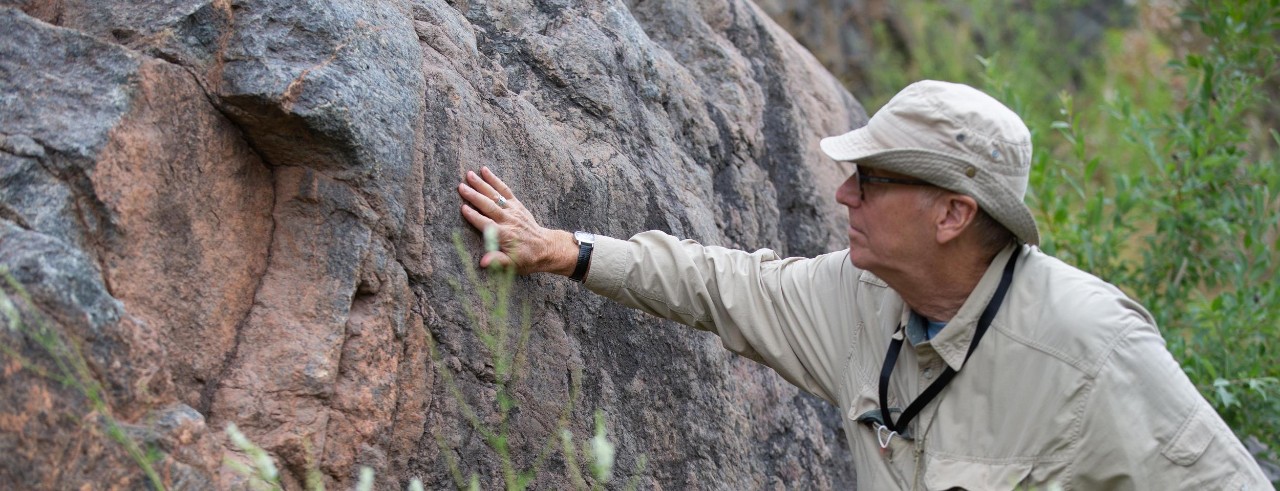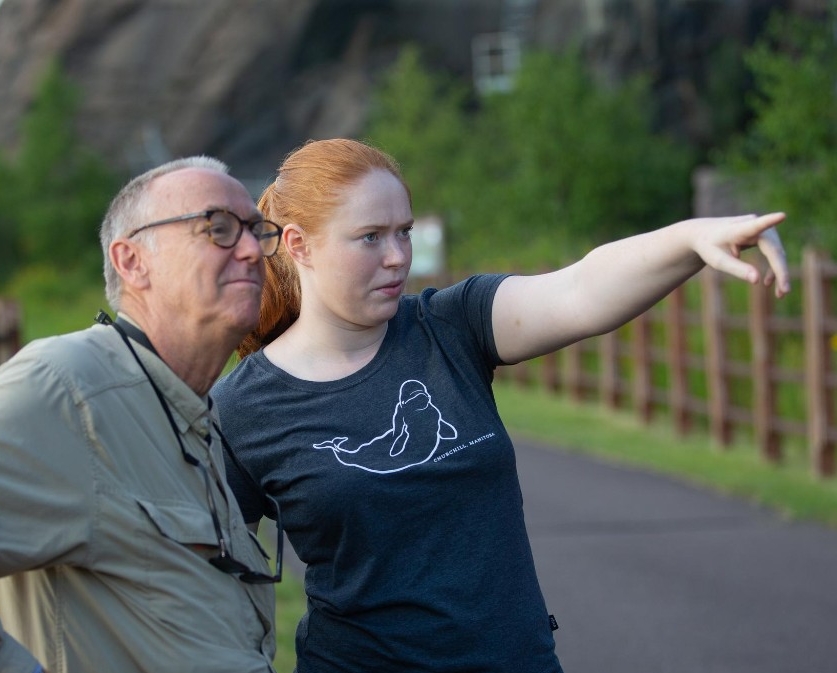
WLW: UC geologist explains local risks from earthquakes
More than 19,000 killed in deadly Turkey earthquake
WLW turned to a University of Cincinnati geologist to explain the earthquake risks in the Midwest after a natural disaster in Turkey and Syria killed more than 19,000 people.
A magnitude 7.8 earthquake on Monday destroyed hundreds of thousands of structures in Turkey and Syria in what the Turkish president described as “the disaster of the century.”

UC associate professor Craig Dietsch leads a geology field trip to Thunder Bay, Ontario. Photo/Andrew Higley/UC Marketing + Brand
UC associate professor Craig Dietsch, head of UC's Department of Geosciences, told 700-WLW's Eddie & Rocky Show that earthquakes occur along known fault lines with no warning.
“Predicting earthquakes is very tricky,” Dietsch told co-hosts Rocky Boiman and Eddie Fingers.
“The fault lines in Turkey are very similar to the San Andreas,” Dietsch said. “They occur where these giant pieces of the Earth's crust are moving around and grinding past one another.”
Dietsch said the largest earthquake recorded in the United States was an 9.2 in southern Alaska in 1964, which generated a tsunami that killed people as far away as California.
“Any earthquake above 7 is a gigantic earthquake,” Dietsch said.
Dietsch leads regular geosciences field trips so students can explore the unique geology of places such as Thunder Bay, Ontario. Read: School of Rocks.
Dietsch said some new buildings in earthquake-prone areas have shock absorbers to help mitigate damage from tremors.
“Everywhere on our planet is under constant stress. If rocks are weak, they tend to slide past each other and you don't get an earthquake,” Dietsch said. “But if two strong rocks are strong, pressure builds up and sooner or later that stress will be released through an earthquake.”
Dietsch said the closest fault to Cincinnati is the Reelfoot Rift in Missouri.
“We live in a pretty seismically safe zone,” Dietsch said.
Listen to the WLW interview on the Eddie and Rocky Show.
Featured image at top: UC associate professor Craig Dietsch examines a cliff face near Duluth, Minnesota, during a 2022 field trip. Photo/Andrew Higley/UC Marketing + Brand
Related Stories
History Department Lecture
January 9, 2002
Lecture by Allan W. Winkler, Miami University, Oxford on "Urban America in World War II: Cincinnati as an example" at the Cincinnati Museum Center at 7:30pm.
UC Research Ranking Climbs
January 10, 2002
The University of Cincinnati moved up in two different national rankings established by the National Science Foundation (NSF) to compare college and university research efforts.
History Department Lecture
January 17, 2002
Lecture by Leslie Adelson, Cornell University, will deliver a Taft lecture titled "Back to the Future and Beyond 'Two Worlds':Turkish Lines of Thought in Contemporary German Literature and Memory Work" at 3:00pm in the Max Kade German Cultural Center in Old Chemistry.
